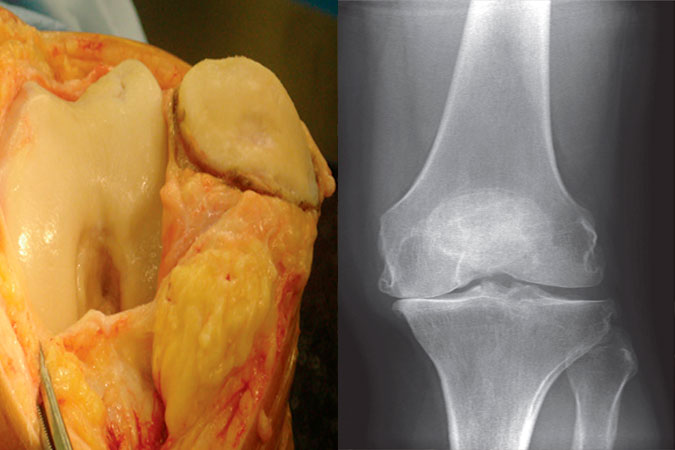Comprehensive Analysis of Degenerative Joint Disease (Osteoarthritis)
This comprehensive article delves into the nature of Degenerative Joint Disease (DJD), also known as osteoarthritis, a common joint disorder not caused by, but often associated with aging. The article explores the disease’s characteristics, such as the degradation of joint cartilage and changes in the underlying bone leading to pain and stiffness. The article underscores the significant impact of DJD on the healthcare system, citing that it accounts for up to a quarter of primary healthcare visits in the U.S. Although the exact cause of DJD is not clear, the article discusses various contributing factors, including overuse of joints and strains from sports or similar activities. The piece concludes by outlining various treatment approaches, including weight reduction, exercise, anti-inflammatory drugs, and in severe cases, joint replacement surgery.

Degenerative Joint Disease (Osteoarthritis)
Degenerative joint disease (DJD), also known as osteoarthritis (OA) or osteoarthrosis, is a common joint disorder characterized by a progressive deterioration of joint cartilage and changes in the underlying bone. Though associated with aging, it’s important to distinguish that it’s not directly caused by aging. This condition has a significant impact on the quality of life of affected individuals and places a substantial burden on the healthcare system.
Understanding Degenerative Joint Disease
OA is marked by a decrease in water and proteoglycan content within the cartilage, a rubber-like tissue that covers the ends of bones in a joint. This results in the cartilage becoming fragile and more susceptible to mechanical disruption.
Over time, as the cartilage wears away, the underlying bone becomes fissured and thickens. This exposes the bony surface, causing it to rub against each other, leading to pain and joint stiffness. Synovial fluid, the substance that lubricates the joints and nourishes the cartilage, may be forced into small cracks that appear in the bone’s surface, leading to the formation of large cysts.

Furthermore, the body tries to repair the loss of cartilage by producing bony outgrowths known as osteophytes or bone spurs. These may limit joint movement and cause pain. This sequence of events leads to slight deformation of the joint, altering the biomechanical forces acting on the joint and creating abnormal stresses, further exacerbating joint disruption.

Prevalence and Impact
In the United States, OA is a significant health concern. It accounts for up to one-quarter of primary health care visits, illustrating the widespread prevalence and impact of this condition.
Etiology
The exact cause of OA remains unclear. However, it’s known that this degenerative disease can occur secondary to other joint diseases, such as rheumatoid arthritis and joint infections. Certain factors may increase susceptibility to chronic joint OA, including joint overuse and abnormal strains experienced by people engaged in sports or jobs requiring repetitive motion or heavy lifting.
Management and Treatment
Management of OA involves a combination of lifestyle modifications, pharmacological treatments, and surgical interventions if necessary.
Weight reduction is often the first line of management, as excess weight can put additional stress on weight-bearing joints, such as the hips and knees. Along with this, proper exercise can strengthen the muscles around the joint, improving stability and reducing pain.
Anti-inflammatory drugs are often used to manage symptoms, reducing pain and inflammation in the affected joint. In cases where OA significantly impacts a person’s quality of life, and other treatments haven’t been effective, joint replacement surgery may be considered.
In conclusion, OA is a prevalent joint disorder with significant implications for patient health and healthcare systems. Advancements in our understanding of its pathophysiology and advancements in treatment options are essential to improving patient outcomes.











